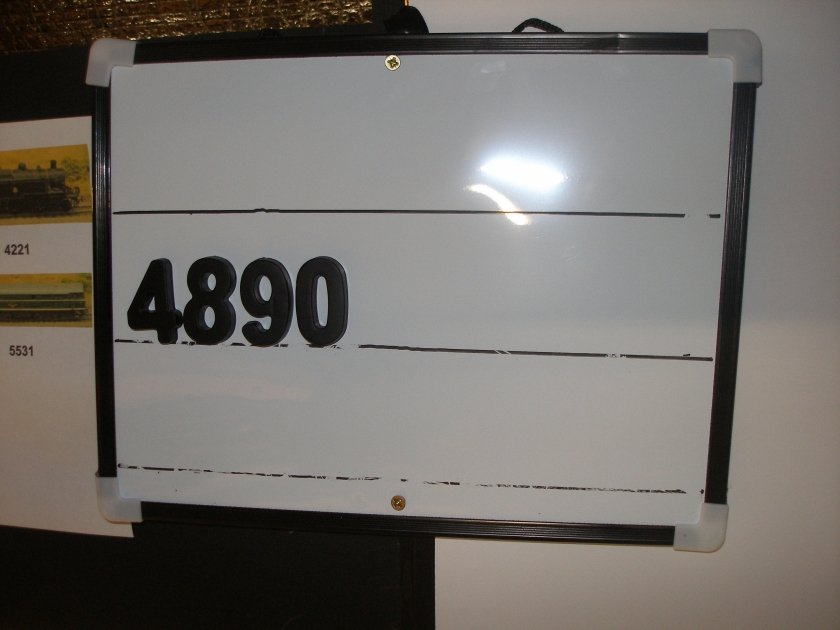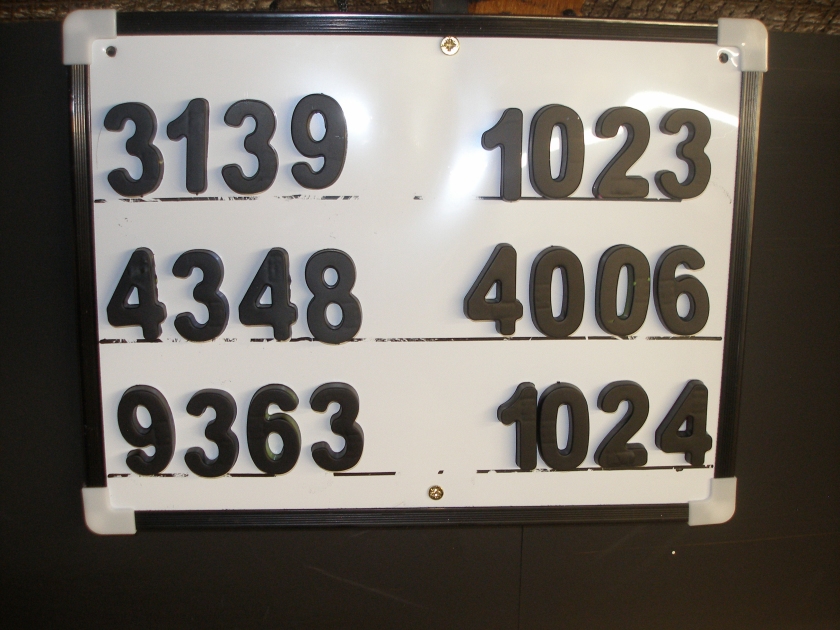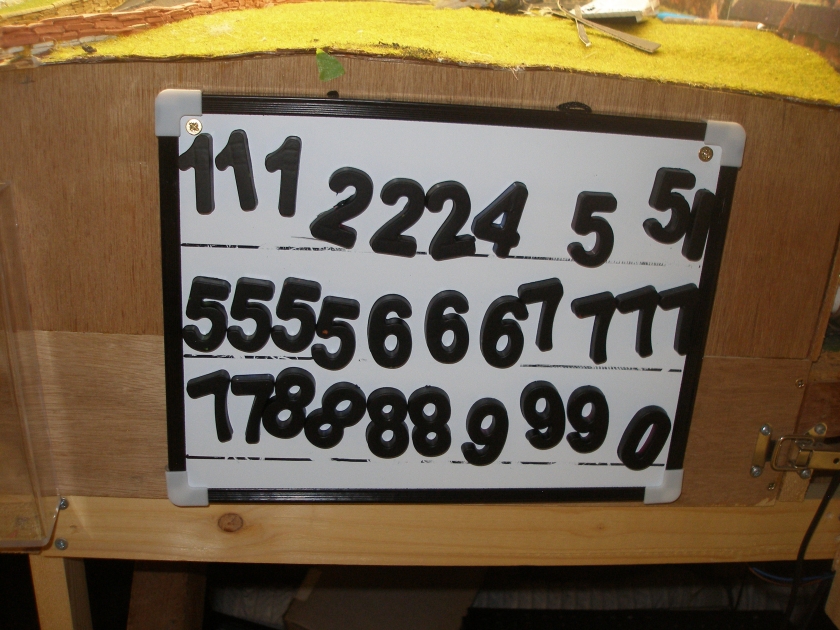
Tracking DCC trains in hidden storage sidings
The problem with hidden storage sidings is that are, err, hidden.
With a DC set-up, you don't need to know the identity of the trains held on any storage road, as it will move when the road is selected and the power turned on.
With DCC a new problem emerges. Because power is always on, a locomotive will only move when its address is selected. This is fine when the operator can remember the address of the train concerned, but is less optimal when there are many trains, often with similar addresses.
I needed a way of easily recording the identity of each train and its location within the hidden storage sidings. The first effort involved a wipe on/wipe off board, but the pen ran dry and the constant writing on and wiping off tended to smudge the numbers of other trains.
I had brief period writing on Post-It notes, but they tended to fall off the board.
I then considered magnetic numbers. There were to possible routes; either printed metal numbers available for warehouse racking or children's plastic fridge-style numbers.
The latter were the cheaper option, and a number of packs at £2.20 a pack were acquired,along with three magnetic boards at £2.70 each.

These are rather brightly coloured for our purposes, and a tin of matt black car spray soon resolved the problem. Holes were drilled in the three boards so that they could be screwed to the pelmet close to the two sets of storage yards,and a third to the baseboard edge to hold the spare numbers. The hidden sidings have three roads, and the numbers are placed on the board to reflect the position of the train in the sidings.


Hall Royd is notionally a London Midland layout, and the majority of locos have a '4' as the first digit. The formula for converting 5-digit BR fleet numbers to a four digit DCC addresses is first digit + the final three digits. Once the initial sets were painted and deployed, it was apparent that there was a shortage of fours, as seen in the image below. So two further sets were purchased to ensure sufficient numbers. As can be seen, the other digit in short supply were zeros.

